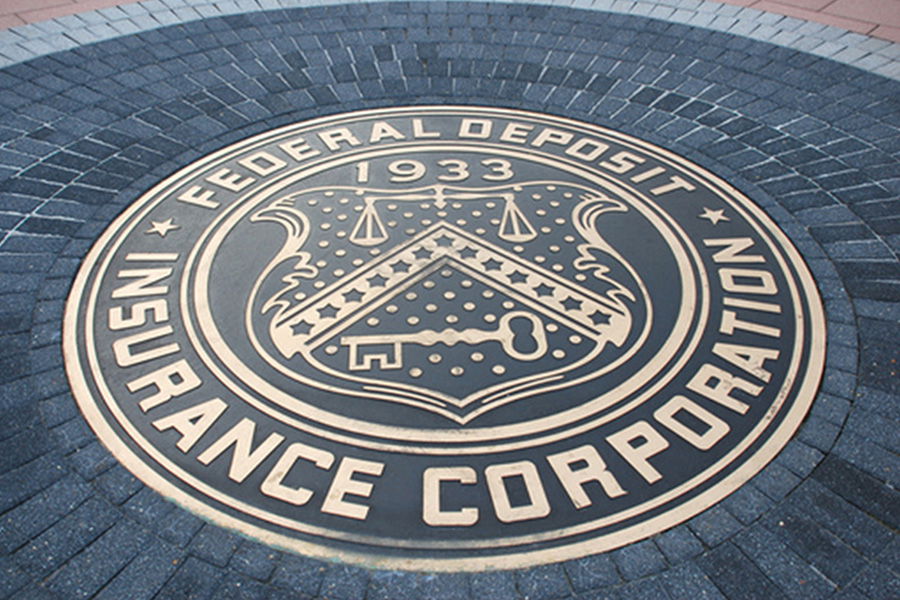In the vast world of banking and finance, few events are as potentially disastrous and historically notorious as a “bank run.” The word carries connotations of an old-fashioned burglary heist executed by men in bandanas. But, in reality, the term is far more mundane.
A bank run describes a scenario where many customers of a bank attempt to withdraw their money simultaneously due to fears of the bank’s imminent insolvency. What causes these banking panics, and how can they impact the average person’s pocketbook and the wider economy?

This guide explores the concept of a bank run, unpacking its causes and consequences. Finally, we’ll look at the measures taken by banks and the federal government to prevent bank runs.
Key Takeaways
- A bank run happens when many customers attempt to withdraw money simultaneously due to fears of the bank’s insolvency. The fractional reserve banking system, where only a portion of deposits is kept in cash reserves, makes banks vulnerable to mass withdrawals.
- Bank runs are usually triggered by rumors or fears about a bank’s financial stability. Once started, the cycle of panic can quickly spread, leading to further withdrawals and potentially causing the bank to fail.
- Measures such as FDIC insurance, central bank interventions, and robust regulations help mitigate bank run risks today. Being aware of your bank’s financial health, ensuring your deposits are insured, and diversifying your holdings are important steps in safeguarding your finances.
What is a bank run?
A bank run occurs when many customers of a bank withdraw their money at the same time due to concerns that the bank may not be able to meet its financial obligations.
With a banking system built on the premise of fractional reserve banking—where only a small portion of bank deposits are backed by actual cash reserves—bank runs can result in a self-perpetuating cycle of fear and cash withdrawals, leaving a bank short of cash and hastening its demise.
What triggers a bank run?
Bank runs are usually triggered by rumors, bad news, or concerns about a bank’s financial health. Even in the absence of actual instability, a wave of fear can cause depositors to panic. Rumors of risky loans or poor financial practices can cause customers to lose confidence in the bank, prompting them to withdraw their deposits en masse.
Events such as broader economic downturns or even the failure of nearby banks can also set off runs at otherwise stable institutions. For example, when Silicon Valley Bank collapsed in 2023, marking the second-largest bank failure in U.S. history, fears of contagion spread rapidly, triggering similar runs at other banks that were perceived to be at risk.
How the Banking System Works: Fractional Reserves
At the heart of the U.S. financial system is the fractional reserve banking system. When you deposit money into a bank, it doesn’t simply sit there. The bank holds only a small percentage, known as reserves, and uses the rest to issue loans or make other investments. This is how banks generate income: by lending your money and charging interest.
Under normal circumstances, this system works efficiently. Typically, only a small percentage of depositors withdraw their money at any given time, so banks can fulfill those requests without issue. However, if a large number of customers attempt to pull out their funds simultaneously, the bank may not have enough cash in reserve to meet the demand. This is where the vulnerability to bank runs arises.
The Domino Effect of Bank Runs
Once a bank run begins, it often spirals out of control. The first wave of withdrawals depletes the bank’s cash reserves, leading to heightened panic among other depositors, who fear they may not get their money back. As more people rush to withdraw their funds, the bank’s liquidity crisis deepens, often forcing the bank to sell off assets at a loss to raise cash.
This can lead to a domino effect, causing widespread bank failures in interconnected institutions. If the bank in question is large or interconnected with other financial institutions, the panic can spread, causing depositors at other banks to lose confidence and initiate bank runs of their own. This is known as contagion, and it can lead to widespread financial instability.
Washington Mutual: A Case Study
A well-known example of this domino effect occurred during the 2008 financial crisis. Washington Mutual (WaMu), one of the largest savings and loan institutions in the U.S., collapsed after a silent bank run in which depositors withdrew over $16 billion in just 10 days. The panic spread quickly, and despite the bank’s initial financial stability, it could not recover from the liquidity crisis.
Historical Bank Runs: Lessons from the Past
Bank runs have shaped the course of financial history, with some of the most significant runs occurring during times of economic turmoil.
The Great Depression (1930s)
Following the stock market crash of 1929, panic spread through the U.S. banking system. Fearful that banks would fail, depositors rushed to withdraw their funds, resulting in the collapse of over 9,000 banks by the end of the 1930s. This period highlighted the vulnerability of banks in times of economic uncertainty and led to significant reforms in the financial system.
2007-2008 Global Financial Crisis
Bank runs during the financial crisis weren’t as visible as those during the Great Depression, but they were just as devastating. For example, Northern Rock in the UK faced a traditional run where depositors lined up to withdraw their money.
In contrast, Washington Mutual and other banks experienced “silent” bank runs, where depositors withdrew funds electronically. These events showcased how quickly panic can spread, especially in a digitally connected world.
The Impact of Bank Runs on the Economy
The effects of bank runs are far-reaching, impacting both individuals and the broader economy. For individuals, a bank run can mean losing access to their money, particularly if the bank collapses before they can withdraw their funds. While deposit insurance, such as FDIC coverage in the U.S., protects up to $250,000 per depositor, it may take time for those funds to be disbursed in the event of bank failures.
On a larger scale, bank runs can trigger economic recessions. When banks fail, the credit supply tightens, making it harder for businesses and consumers to borrow money. This leads to reduced spending and investment, which can cause the economy to contract. The ripple effects of multiple bank runs can plunge a country into economic turmoil, as seen during the Great Depression.
Preventive Measures Against Bank Runs
To prevent bank runs and maintain confidence in the banking system, several safeguards have been put in place:
- Deposit Insurance: In the U.S., the FDIC (Federal Deposit Insurance Corporation) insures deposits up to $250,000 per depositor, per account type. This insurance provides peace of mind to depositors, reducing the likelihood of panic withdrawals during times of uncertainty.
- Lender of Last Resort: The Federal Reserve Bank in the U.S. serves as a lender of last resort, offering liquidity to banks facing crises and helping to prevent further bank failures.
- Regulatory Oversight: Following the financial crises of the past, governments have implemented stricter banking regulations. For example, the Dodd-Frank Act of 2010 introduced measures to increase transparency, reduce risk-taking, and ensure that banks maintain higher levels of capital to protect against potential runs.
- Stress Testing: Many central banks now require large financial institutions to undergo regular stress tests. These tests simulate different financial crisis scenarios to ensure that banks have enough capital to withstand potential liquidity pressures and remain solvent during economic downturns.
How to Protect Your Money in a Bank Run
If you’re concerned about the possibility of a bank run, there are several steps you can take to protect your funds:
- Ensure FDIC Insurance: Verify that your deposits are insured by the FDIC, which protects up to $250,000 per depositor, per account type. This applies to checking accounts, savings accounts, CDs, and money market accounts.
- Diversify Your Accounts: Spread your deposits across multiple banks to stay within the FDIC insurance limits. By doing this, even if one bank fails, your money in other banks will remain protected.
- Consider Credit Unions: Credit unions are insured by the National Credit Union Share Insurance Fund (NCUSIF), which offers similar protection to the FDIC. Depositing funds in a credit union can provide an extra layer of security for your savings.
- Stay Informed: Keep an eye on the financial health of your bank. Most banks are required to release quarterly financial statements, which can give you a sense of their stability. If your bank is experiencing financial trouble, you may want to consider moving your money to a more secure institution.
Bottom Line
Bank runs are less frequent today thanks to regulations like Federal Deposit Insurance Corporation (FDIC) coverage and the role of the Federal Reserve Bank, but they remain a risk, particularly during economic uncertainty. Understanding how bank runs occur, their triggers, and how they can affect both individual depositors and the wider economy is crucial.
By ensuring your deposits are insured, diversifying your accounts, and staying informed about your bank’s financial health, you can mitigate the risks posed by a potential bank run.




